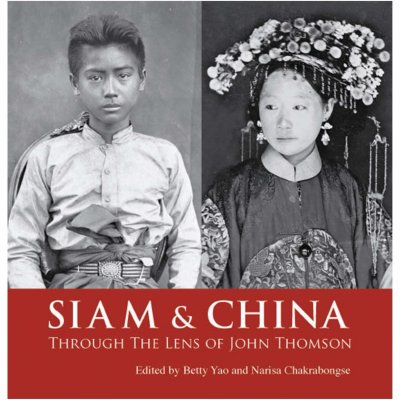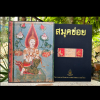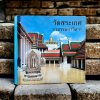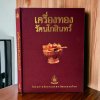
SIAM & CHINA Through The Lens of John Thomson
SIAM & CHINA
Through The Lens of John Thomson
Description
Legendary photographer and travel writer John Thomson (1837-1921) left
Scotland for Singapore in 1862 and over the next ten years undertook numerous journeys in Asia including Siam, Cambodia, Vietnam and many areas in China. The photographs of these journeys form one of the most extensive records of any region taken in the 19th century. The range, depth and aesthetic quality of John Thomsons vision mark him out as one of the most important travel photographers.
Thomson arrived in Siam in 1865 and with the help of the British Consul in Bangkok, he gained an audience with King Mongkut who granted him permission to take formal portraits of himself, his royal family and chief ministers, as well as recording important ceremonies and travelling to Ayutthaya, Petchaburi and the surrounding countryside. Staying in Bangkok for several months, he photographed many aspects of life along the river, before journeying to Cambodia and Angkor Wat, where he was the first photographer to document the legendary temple before returning to London.
Between 1868-1872 Thomson turned his attention to China, making extensive trips to Guangdong, Fujian, Beijing and Chinas north-east, travelling down the Yangtze river and covering nearly 5,000 miles. In China, Thomsons photographic skills reached their zenith and his portraits of women are particularly remarkable. His collection of over 600 glass negatives form a unique archive of images, which are today housed in the Wellcome Collection, London.
Author Betty Yao and Narisa Chakrabongse
ISBN 978 616 451 069 2
Size H228 x W228 mm
No. of pages 208 pages
Specification Paperback, 200 photographs
- หน้าแรก หน้าแรก
- เกี่ยวกับเรา เกี่ยวกับเรา
- หมวดหมู่หนังสือ หมวดหมู่หนังสือ
- วิธีการสั่งซื้อและชำระเงิน วิธีการสั่งซื้อและชำระเงิน
- เงื่อนไขการคืนสินค้า เงื่อนไขการคืนสินค้า
- สาระน่ารู้ สาระน่ารู้
- ติดต่อเรา ติดต่อเรา



